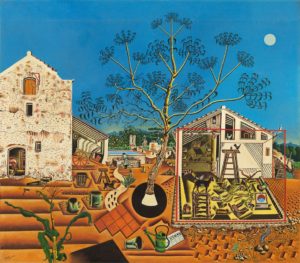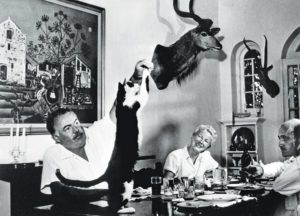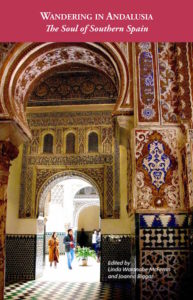Hemigway’s favorite painting— Joan Miró’s The Farm—goes on exhibit in Paris

Joan Miró’s The Farm. Courtesy National Gallery of Art , Washington © Succession Miró/ADAGP, Paris and DACS, London 2011
Visiting Hemingway’s Havana house, La Finca Vigia, last year was like a time-warp ride in his ’55 Chrysler back into his life in Cuba—to the home he loved filled with his books, hunting trophies, his art and his demons. Seeing his favorite painting—Joan Miró’s The Farm—propped in the dining room was magical, even though the version on view at the Finca is a reproduction.
The painting was woven into the fabric of Hemingway’s life, from his early days scrimping by in Paris, to the glory days in Key West and Havana, to the sad years of decline when he lost his home in the chaos of two Cuban revolutions, as well as his ability to write.
This month, The Farm goes on view in a major Miró retrospective in Paris at the Grand Palais museum complex.
The exhibition runs from October 3, 2018, through February 4, 2019. If you’re planning to be in Paris during that time, don’t miss it. Details here https://www.grandpalais.fr/en/event/miro
In Paris in the 1920s, Hemingway and Miró were friends, both working feverishly, trying to make it as creative artists.
“My stories would all come back with rejection slips and Miró’s unsold canvases were piled up all over his studio,” Hemingway once said.
One of those canvases was The Farm, “a large and wonderfully strange picture” of Miró’s family farm near Barcelona. Miró worked on the painting for nine months. While art dealers scoffed at what would later be called Miro’s seminal work, Hemingway was smitten.
He “became so crazy about it that he wanted to buy it even though he didn’t have a cent in his pocket,” Miró once wrote.
With a wife and baby to support, there was no way Hemingway could afford the 3,500-franc price—about $175 at the time. But he persevered: he scrimped and cajoled, took odd jobs, and borrowed from friends to buy the painting in 1925. No one can say what The Farm might be worth today— but guesstimates hit the stratosphere above $10 million, perhaps as much as $30 million or more.

Hemingway with his cat, Boise, wife Mary, and Joan Miró in the dining at the Finca. From Popperfoto/Getty Images
There’s no wonder that Hemingway loved the painting.
“It has in it all that you feel about Spain when you are there and all that you feel when you are away and cannot go there. No one else has been able to paint these two very opposing things,” Hemingway wrote in an art magazine nine years after he bought the painting.
Writer John Updike (a sometime art critic) once wrote “the painting is possessed by an ecstasy of simple naming, a seemingly innocent directness that is yet challenging and ominous.”
One could say the same about Hemingway’s best prose.
The race to spirit The Farm out of Cuba after the Communist Revolution is worthy of a movie thriller. That clandestine operation, and the effort to restore the painting from the depredations of decades in the humid tropics—are detailed in a Vanity Fair story published yesterday, “The Old Man and ‘The Farm’: The Long, Tumultuous Saga of Ernest Hemingway’s Prized Miró Masterpiece.”
.
In 1987, Hemingway’s widow, Mary, donated the painting to the National Gallery of Art in Washington, DC, still its permanent home.
*****
Anne Sigmon’s story about traveling on the Hemingway trail in Cuba— “Hemingway, Cuba, and Me”— won top prize in the 2018 Book Passage Travel Writers Conference conference. It is published this month on the GeoEx blog Wanderlust: Literary journeys for the discerning traveler edited by Don George.




